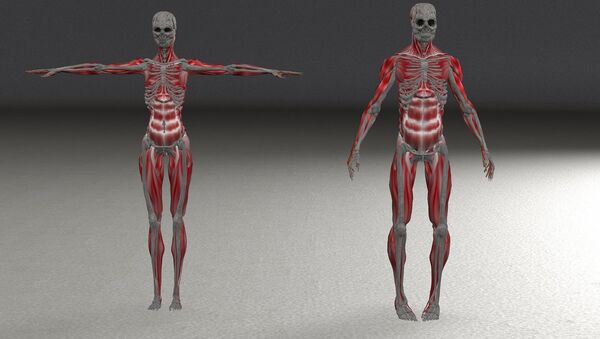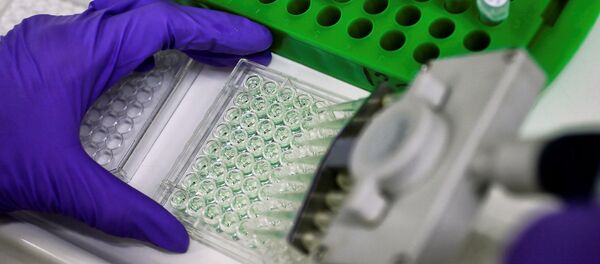On October 10-14, The National Research Nuclear University MEPhI hosted the 2nd International Symposium on Physics, Engineering and Technologies for Bio-Medicine. One of the key speakers at the event Roger Kamm, recipient of the ASME Lissner Award (2010) and European Society of Biomechanics Huiskes Medal (2015), a professor at Massachusetts Institute of Technology (MIT), talked to RIA Novosti about modern biomechanics.
Your research team is known to be working in four major areas — biological machines and microfluidic technologies, angiogenesis and vasculogenesis, as well as metastatic cancer modeling. What are biological machines and what functions do they perform?
Roger Kamm: Actually biological machines may vary from bio robots which are basically small "test beds" that are activated, say, when muscles contract to well-designed organisms that can be effectively used for drug screening or be enlarged to the size of the organ to be implanted in a patient. So there are a number of various research areas that are developing with the use of biological machines or trying to move towards it.
The Center for Emergent Behaviors of Integrated Cellular Systems at the Massachusetts Institute of Technology has about 30 researchers from ten different universities. We are trying to understand the processes used by cells "communicate," or interact with each other and develop higher level structures.
A simple example is that of vascular cells which we can observe in a 3D matrix. They are made in such a way that they form vascular networks. Similarly, we can follow muscle cells that turn into muscle bundles, elements of a higher order with several types of cells in its composition creating a new function which individual cells are unable to perform by themselves.
Do I understand it right that computer modelling based on artificial neurons can help in understanding the biological processes which go on in our bodies? Will it help prevent diseases at the gene level?
Roger Kamm: Yes, certainly. The possibility of modelling pathological or normal biological processes in the body in the microfluidic system allows for detailed monitoring of the behavior and, specifically, the death or dysfunction of the cells, in all the organs or tissues in the body. It allows us to control the environment to simulate what goes on in the body and its behavior.
I can put it this way: it is possible that we can continuously observe what is happening in high definition which opens up an incredibly wide range for actions. For example, to conduct high throughput drug screening. Or let's imagine the following: you have a hundred different compounds which, in your opinion, may be effective in treating a particular disease. It would be extremely costly and time-consuming to do this in animals.
Instead, you can populate a hundred microfluidic devices each of which contains a model organ system, and can help test each of the medications or kinds of therapy and then conclude which is better. Also, further development of this area will let us create practically identical systems made of your cells or mine, and they will let us understand how you and your body responded to a particular medication, for example, in Alzheimer disease.
Will the study of natural neurons (the ones which are inside our bodies) and their links allow for creating an artificial intelligence, analogous to human intelligence? If yes, when could that happen?
Roger Kamm: I think it is quite possible in the future. What we can do well now is form neuron clusters. We can do this in two ways — take embryo (or induced from pluripotent) stem cells, and use them to form a cell aggregate and induce them to differentiate into central neurons. As soon as they are differentiated, they immediately begin to communicate with each other: neuron processes are underway on a scale of one tenth of a millimeter. This is very small, however, it still reflects the reproduction of a certain signals in the central nervous system.
Nevertheless, in terms of obtaining data, it doesn't tell us anything except that you are observing some kind of excitation or the generation of electrical signals. The real breakthrough in this area will happen when we get clusters that are for the most part similar to brain clusters and at the same time they can train cells and control the processing of the information transmitted through them, and correspondingly, can really function as a brain. I would estimate that we can expect this breakthrough within about ten years.
Will your research put an end to vascular diseases (for example, vegetative-vascular dystonia, hypertension or hypotension)? When could this happen and where does your research stand at the moment?
In such matters our research is closely intertwined with the studies of other research groups working on hypertension therapy and other kinds of cardiovascular diseases. But our main focus is to perfect metastatic cancer therapy because it is metastasis that causes death in nine of every ten cancer patients. And what we are doing now as a matter of priority is to model both computationally and by experiments the process itself whereby cells form metastatic tumors. I'm here at MEPhI to report on how our work on microfluidics can help oncology.





